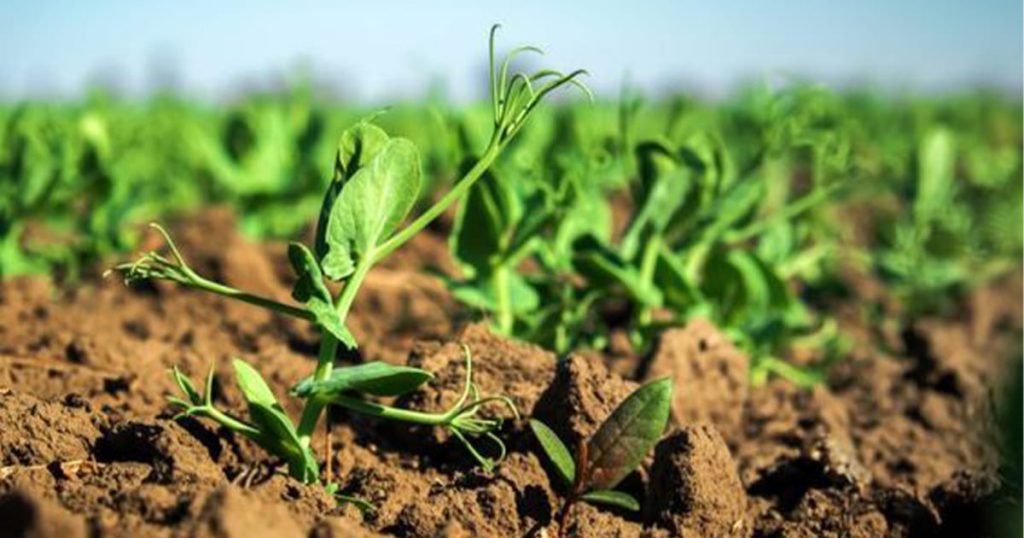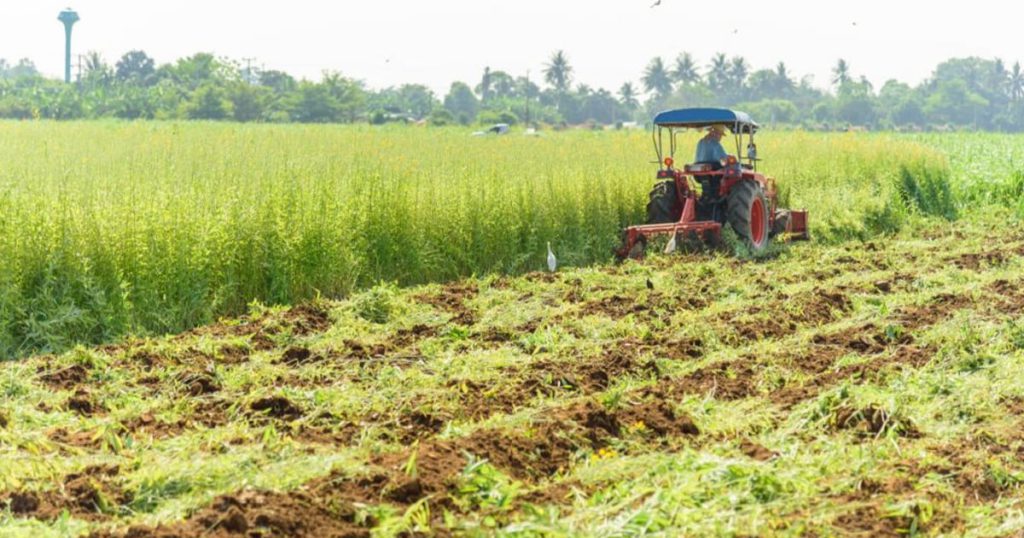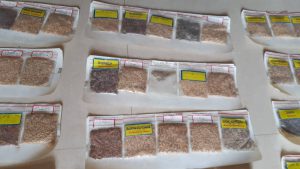The health of the soil and crop is the most crucial responsibility a farmer has, and the presence of decomposers, which promote soil growth and fertility and crop health overall, is the most vital factor that must be taken into account to maintain adequate soil health and fertility.
What is Green Manure?
Green manure is a technique used in agriculture to boost soil fertility. To achieve this, crop fragments that have been uprooted or sown are left on the field to wither and serve as mulch and soil nutrients. The plants used in green manure frequently cover crops like grasses or legumes.
Green manure is unrelated to animal waste. It allows plants and crops to decompose on the field to increase the soil’s organic content and replenish nutrients that the soil may have lost during cultivation.
Green manure crops are grown alongside the primary crops to lessen soil erosion, maintain soil fertility, and give the soil time to recover (similar to crop rotation).

How does Green Manure Work?
Green manure’s primary function is to improve the soil’s ability to support future crop growth. The nutrients in green manure come from the soil. Since harvesting and removing these crops from the ground would deplete the soil’s nutrients, they are instead tilled into the soil while they are still green. When plants are replanted in the soil, they gradually decompose and release these nutrients over time for the benefit of the succeeding crop.
Green manure also serves as food for a variety of soil organisms and bacteria. The diversity of the flora is essential for the health of the soil. Through their activity and mobility, they help organic materials spread throughout soils, which also aids in the formation of a healthy soil structure.
Also Read:- Maximizing Profits with Agriculture Consulting for Cost Savings
Various kinds of Green Manure
Green manure is primarily divided into two categories:
Legumes: Legumes are a type of green manure that grows over the roots with the aid of a particular type of bacteria. They have nodules that can take in nitrogen from the air and change it into a form that plants can use.
Non-legumes:- Non-legumes are a different kind of green manure that does not contain or fix nitrogen, but they can also hold onto nutrients that might otherwise be leached and provide helpful amounts of organic matter. Because they can grow rather quickly, non-legume green manures can be added when production is slow during the growing season.

The Benefits of Green Manure and Why Farmers Need It
Green Manure Aids in the Reduction of Erosion and Nutrient Leaching
Green manures aid in the reduction of nutrient loss in the environment. Green manures lock nutrients inside their bodies until the crop is planted in the soil. Nutrients are slowly and gradually released into the soil as plants decompose, just in time for the next crop to use them for growth. Green manures, also known as cover crops, are primarily cultivated to cover soils during the coldest winter or hottest summer months to prevent soils from being exposed to certain elements. Roots hold soil particles in place, and plant bodies act as shade from the sun, preventing erosion.
Aids in Weed Elimination
It has been used by many farmers primarily for its ability to eliminate weeds. Green manure disrupts the growth pattern or emergence cycle of weed plants, causing them to compete for space, food, and water. Some rye and clover varieties produce compounds in their roots that inhibit soil-borne seed germination. This phenomenon is also known as the allelopathic effect.
Improves Soil Structure
They improve soil structure significantly. Organic matter, once integrated into the soil, binds soil particles together and aids in the formation of soil aggregates. These large particles, once formed, allow pores to form, which are necessary for effective soil aeration, nutrient distribution, and water retention. Such soils allow plants to absorb nutrients more efficiently and have stronger root systems. A high level of organic matter ensures consistent soil fertility because it preserves and improves the biological and physical characteristics of the soil.
Allows Beneficial Microorganisms to Flourish in Soil
The presence of soil microorganisms determines the overall health of the soil structure. Their efforts are critical for the formation of soil aggregates because they increase soil porosity and incorporate organic materials. One of the primary advantages of green manure is that it promotes high biodiversity and increases the number of microorganisms.
Conclusion
The condition of performing intensive farming techniques, particularly in light of the havoc climatic conditions, irregular weather patterns, soil erosion, and land contamination due to synthetic chemicals, causes farmers to change their farming approaches or techniques.
Green manure is a reasonable and cost-effective method of ensuring long-term productivity in agricultural fields. It revitalizes the soil’s vital organic matter and nutrients, giving it new life and increased productivity. Legumes are used in green manure techniques because their roots contain microorganisms that fix nitrogen in the soil. As a result, the farmer will be able to save money by not using synthetic fertilizers.





